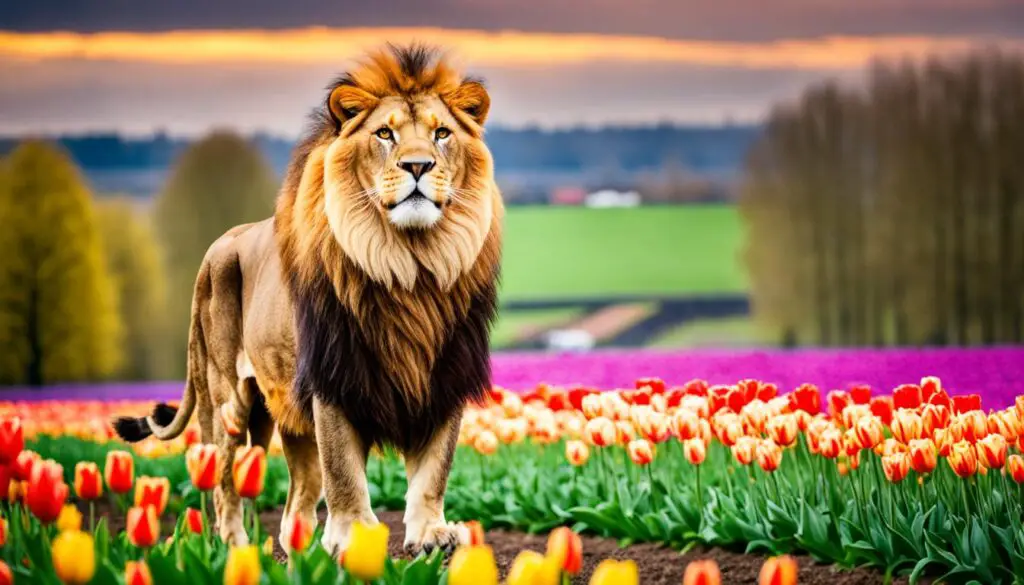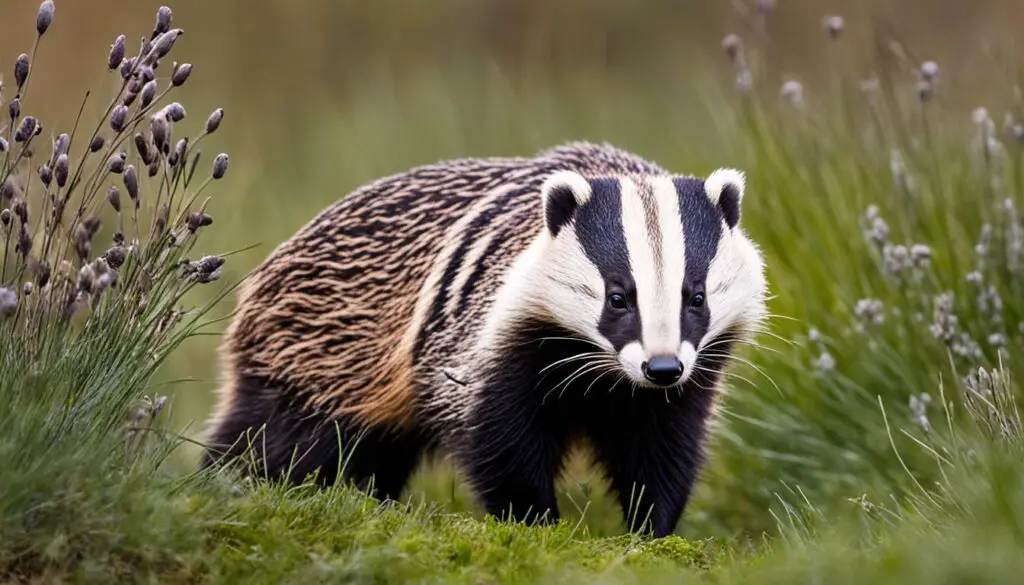If you think of the Netherlands, images of tulips, windmills, and picturesque canals probably come to mind. But did you know that this small European country is also home to a surprisingly diverse range of wildlife? From native species to introduced animals, the Netherlands boasts a rich variety of fauna that will leave you in awe.
To get a glimpse of the incredible Dutch wildlife, you don’t have to go on an African safari or embark on an Amazon rainforest expedition. The animals of the Netherlands are waiting to be discovered in their natural habitats, from the wetlands of Friesland to the forests of Veluwe.

With a strong commitment to animal conservation, the Netherlands ensures the protection and preservation of its unique wildlife. Discover the enchanting world of Dutch zoology, explore the diverse animal species, and uncover the captivating beauty of wildlife in Holland.
Key Takeaways:
- The Netherlands is home to a surprisingly diverse range of wildlife
- Dutch fauna includes both native and introduced species
- The wetlands of Friesland are abundant with the black-tailed godwit, the national bird of the Netherlands
- Red deer, seals, wolves, wild boars, and badgers are among the notable animals found in the Netherlands
- Conservation efforts are in place to protect these species and their habitats
The Netherlands’ National Animal
The national animal of the Netherlands is the lion, which has been featured on the country’s coat of arms since the 16th and 17th centuries. Lions have not naturally occurred in Western Europe for thousands of years, so their presence in Dutch heraldry is symbolic. The lion became associated with Dutch independence during the country’s fight for freedom in the 16th century, led by Willem van Oranje-Nassau. To honor his role in the resistance against the Spanish empire, lions were included in the Dutch coat of arms as a symbol of strength and bravery.

| Keyword | Description |
|---|---|
| National animal of the Netherlands | The lion is the national animal of the Netherlands. |
| Dutch coat of arms | The lion is featured on the Dutch coat of arms. |
| Lion symbolism | The lion represents strength and bravery. |
| Dutch independence | The lion is associated with the Dutch fight for freedom. |
| Willem van Oranje-Nassau | Willem van Oranje-Nassau led the Dutch resistance. |
Wildlife in the Netherlands
The Netherlands is known for its diverse ecosystems, which provide a range of habitats for native animals. From dunes to wetlands, lakes to forests, the Dutch landscape offers a wealth of wildlife spotting opportunities.
Dutch Wildlife Habitats
The diverse ecosystems of the Netherlands support a variety of native animals. Here are some of the key habitats:
- Dunes: The coastal dunes provide a unique habitat for a range of species, including rabbits, foxes, and various bird species.
- Lakes: The lakes in the Netherlands are home to a wide variety of water birds, including ducks, herons, and swans.
- Wetlands: The wetlands, such as the famous Biesbosch National Park, offer a haven for water-loving creatures like beavers and otters.
- Forests: The Dutch forests are home to several species, such as deer, boars, and badgers.
Native Animals in the Netherlands
The Netherlands is home to a number of native animals, some of which are unique to the country. Here are a few examples:
| Animal | Habitat | Notable Locations |
|---|---|---|
| Red Deer | Forests | Oostvaardersplassen |
| Seals | Coast | Texel |
| Wolves | National Parks | Hoge Veluwe, Sallandse Heuvelrug |
| Wild Boars | Forests | Veluwe, National Park De Meinweg |
| Badgers | Forests | Throughout the country |
These native animals can be observed in their natural habitats, providing wildlife enthusiasts with exciting opportunities for spotting and photographing these magnificent creatures.

With the diversity of Dutch ecosystems and the presence of native animals, the Netherlands is a haven for wildlife enthusiasts. Whether it’s exploring the dunes, observing water birds in the lakes, or tracking the footsteps of wolves in national parks, there is something for everyone to appreciate the beauty of Dutch wildlife.
Endangered Species in the Netherlands
According to the IUCN Red List, the Netherlands is home to several endangered and vulnerable mammal species. These species face various threats and conservation efforts are underway to protect their populations and habitats.
Conservation Status and Threats
The IUCN Red List classifies two mammal species in the Netherlands as endangered and two species as vulnerable. Additionally, seven species are listed as near threatened. The endangered mammal species in the Netherlands are the European hamster and the Common noctule bat.
These species are facing multiple threats, including:
- Habitat loss
- Fragmentation
- Climate change
These factors significantly impact their survival and contribute to the decline in their populations.
Conservation Efforts
To safeguard these endangered and vulnerable species, conservation efforts are being carried out in the Netherlands. These efforts primarily focus on:
- Habitat management
- Captive breeding programs
By implementing effective habitat management strategies and captive breeding programs, conservationists aim to restore and protect these species’ populations.
Netherlands’ Endangered Mammal Species
| Species | Conservation Status |
|---|---|
| European hamster | Endangered |
| Common noctule bat | Endangered |
Conclusion
The Netherlands is renowned for its diverse wildlife and rich fauna. From the iconic lion and black-tailed godwit to indigenous mammals such as red deer and seals, the country is home to a wide range of animal species. The recent return of wolves and ongoing efforts to protect and restore endangered species demonstrate the Netherlands’ commitment to conservation and biodiversity.
Preserving habitats and implementing sustainable practices are key priorities for the Netherlands. By safeguarding the unique fauna and flora, the country aims to ensure that future generations can continue to enjoy the natural beauty and biodiversity that define the Dutch landscape. Through Dutch wildlife photography, people have the opportunity to appreciate and raise awareness about the remarkable animals that call the Netherlands home.
Conservation efforts play a crucial role in maintaining the delicate balance between human activities and nature. The Netherlands’ commitment to protecting its wildlife showcases its dedication to preserving Dutch biodiversity. By working together, we can ensure the sustainability of the Netherlands’ diverse ecosystems for years to come.
